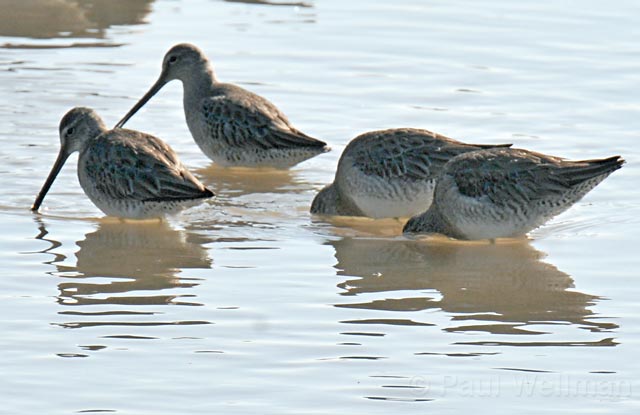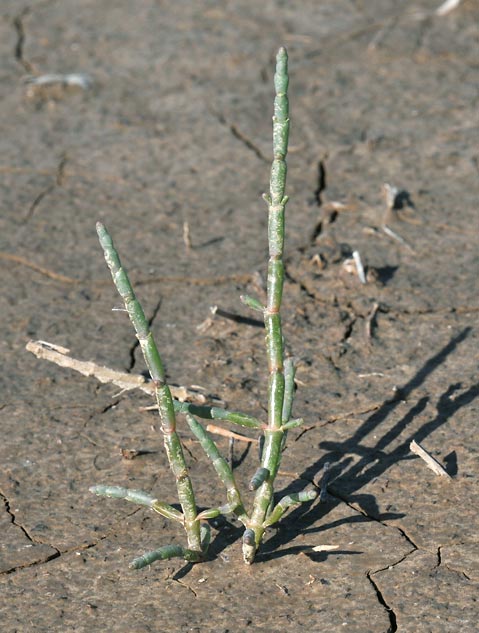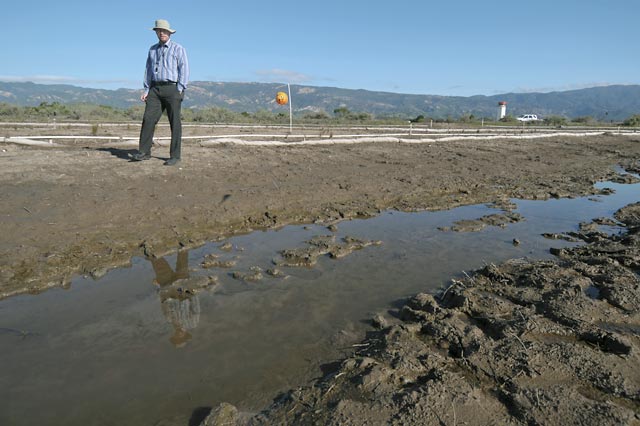Goleta Slough Goes Tidal
Revolutionary Restoration Project for Santa Barbara Airport

It’s taken a quarter-century of wrangling and research, but the ocean’s tides are once again washing through parts of the Goleta Slough, making the formerly stagnant coastal habitat healthier for native plants and animals while simultaneously making the Santa Barbara Airport a safer place to fly.
“We’re just putting back what we took away,” said airport planner Andrew Bermond, who’s been working on the project for about five years now and is happy to see birds like killdeer, black-necked stilt, and sandpiper from his office window, as well as pickleweed, witch hazel, coyote brush, and Coulter’s goldfields once again growing on the site. The latter plant, said Bermond, “is endemic of tidal wetlands in Southern California, of which few are remaining. It’s thriving here.”

The idea, which was first hatched in the mid 1980s but was officially proposed in the early 2000s, initially made the Federal Aviation Administration (FAA) bristle, as they feared that more water all the time — rather than the standing pools of water that only accumulated during the wet seasons — would equate to more birds and, therefore, more hazards for pilots. But with experts suggesting that the bird-strike hazard might actually decrease, the FAA was willing to listen and learn, and studies quickly showed what advocates had predicted: Tidal flow attracts smaller shorebirds that fly lower, not the large migratory birds like geese that are much more troublesome for pilots. So the feds approved the project.

“Our main concern with this project initially was whether increased water would bring more birds and create a bird-strike hazard for aircraft around Santa Barbara,” said FAA spokesperson Ian Gregor. “Lo and behold, it turns out that not only was there not an increase in bird activity, but there were fewer bird overflights of the airport environment. And at the same time, it looks like the slough restoration is going to reduce the threat of airport flooding. It was really a win-win-win any way you look at it.”
“It was a major coup to get the FAA to agree to the study,” said Pat Saley, an environmental planner who’s been working with the airport on this idea since it was first put on paper in 1988. “You understand their reticence, but they were won over by the data. That’s pretty significant. It has implications for lots of airports.”

Gregor is quick to explain that the Santa Barbara Airport project did not actually set any specific precedent, however. “Every restoration project would be unique, and we’re not going to use one restoration project as a precedent for pursuing projects in other parts of the country,” he explained.
But the signs are good, at least for Goleta. With almost a year of tidal flow under his belt, Bermond has already seen a decrease in bird strikes, though he admits it could be from a combination of factors. More exciting are the other airports that are calling, from the Naval Base at Point Mugu to airport planning firms in Michigan and Hawai‘i. “The word is sort of gradually spreading that we’ve done this,” said Bermond. “It’s a cheap and natural way for reduction of birds. The alternative is we put people in danger or we go out and duck hunt.”



